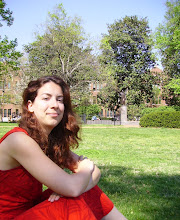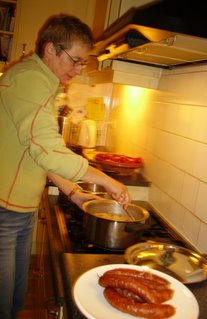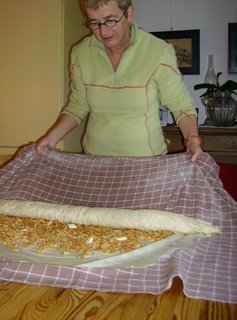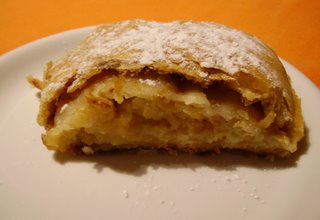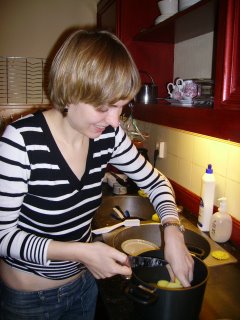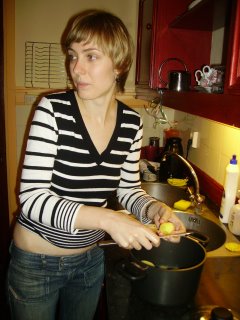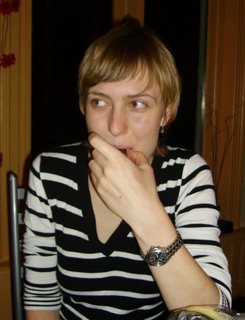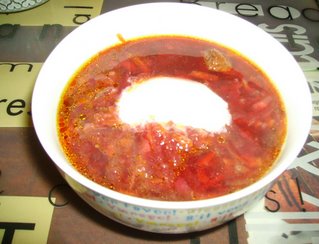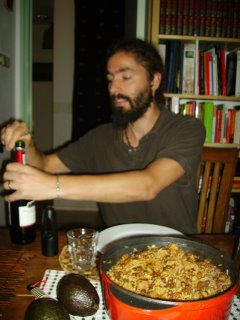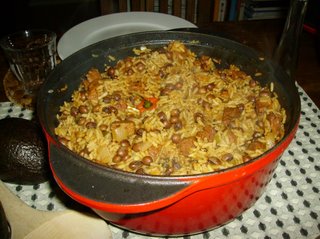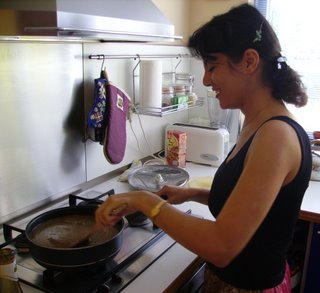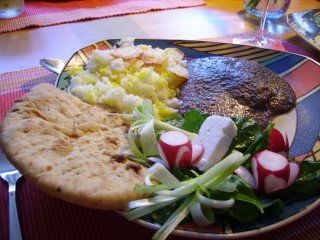 The way I met David is quite exemplary for the so-called global village. On holiday in Costa Rica, I met a nice Canadian girl and we kept in touch through email. When her high scool friend David came to study in Holland, she let me know. So now I'm here to taste real poutine, a fast food dish I already heard about on the Caribbean coast...
The way I met David is quite exemplary for the so-called global village. On holiday in Costa Rica, I met a nice Canadian girl and we kept in touch through email. When her high scool friend David came to study in Holland, she let me know. So now I'm here to taste real poutine, a fast food dish I already heard about on the Caribbean coast...According to David, it's a real blue collar dish and is supposed to be "disgusting, soggy and cholesterol laden", though in a good way. The potatoes should ideally be fried in old oil, so the fries get a brownish colour. I'm not allowed to call it "Quebecois", as the love for poutine is more related to the French-Canadian culture than to the geographic boundaries...I have to admit I used to think the two were the same.
This famous dish is not eaten at fancy restaurants, but at the roadside, at home or at hockey rinks all over Canada. But David wouldn't
 know about that, he isn't fan of this quintessentially Canadian sport. To quote him literally: "I associate hockey with players on steroids...no skill seems to be involved most of the time! I actually prefer long track skating." Hope he doesn't have any hockey loving friends reading this...
know about that, he isn't fan of this quintessentially Canadian sport. To quote him literally: "I associate hockey with players on steroids...no skill seems to be involved most of the time! I actually prefer long track skating." Hope he doesn't have any hockey loving friends reading this...To recreate the orginal poutine, it was impossible to find the right ingredients here: the cheese curds on top are best bought in one specific village, and the gravy used is sold specially as "sauce for poutine". But he has improvised before, while studying in Sweden. This time the cheese is Dutch Gouda, and the gravy is "brown sauce" from Knorr.
You fry the potatoes in (preferably old) oil, shake them with salt in a paper bag to distribute the salt and absorb excess oil. Then pour over gravy and

shredded cheese (curds).
Sounds easy, right?
But I think I'll wait till I'm in Canada to try the real thing, instead of
trying to make it myself here in Holland. It actually reminds me a bit of the Dutch "friet speciaal" or a "patatje oorlog"; the first is fries with mayonaise, ketchup and chopped onions, the
second consists of fries with mayonaise and peanut sauce. In these "dishes", the fries on the bottom always end up a bit
 soggy too. And I never prepare it at home, I always buy it at the snackbar.
soggy too. And I never prepare it at home, I always buy it at the snackbar.After dinner, we head out to the oldest bar in the Hague with some fellow Canadians and I hear for the first time that Canadians are supposed to say "eh?" at the end of every sentence (and "fuckin'eh" when drunk...not the same as "fucking A", by the way). Somehow I've managed to get to know quite a few Canadians without ever noticing them using "eh"!
